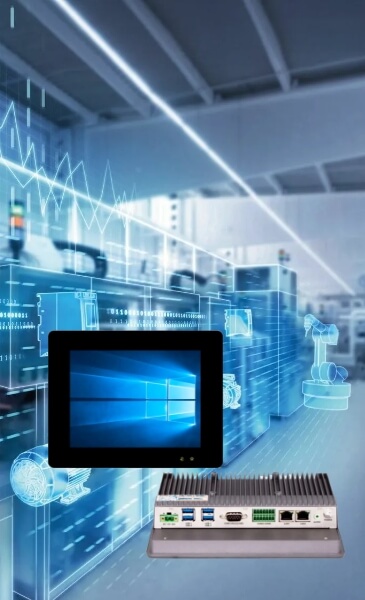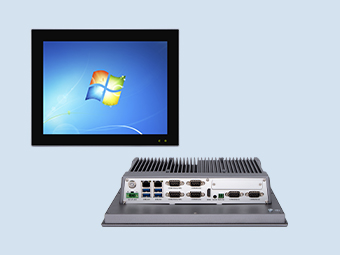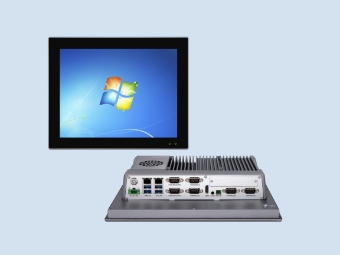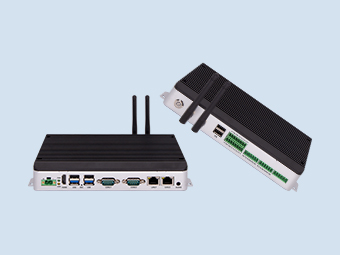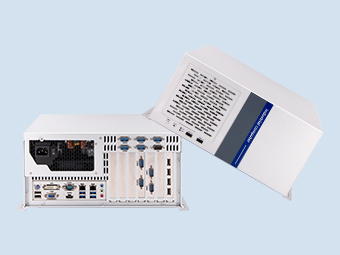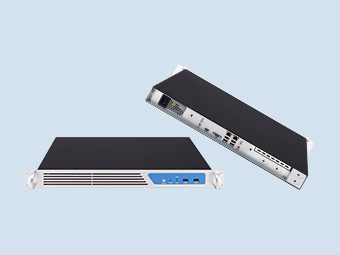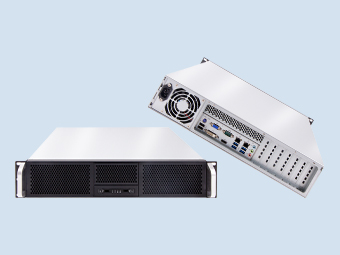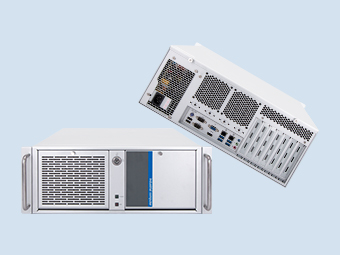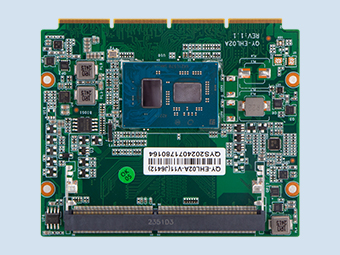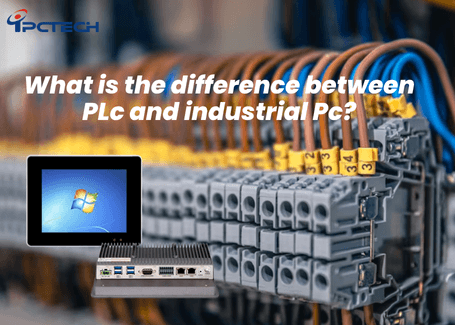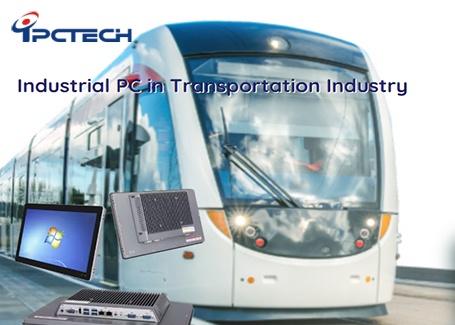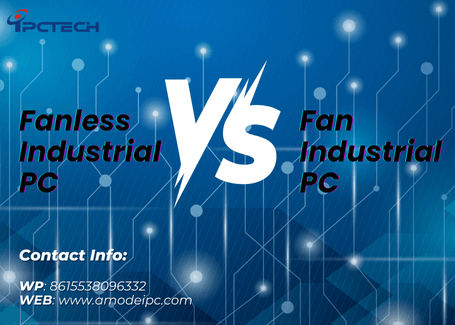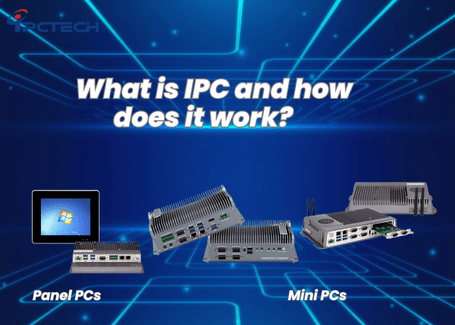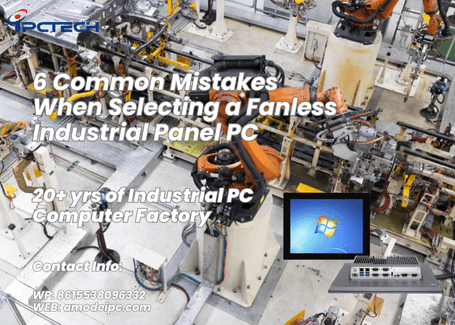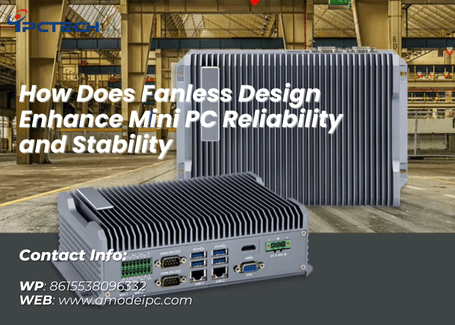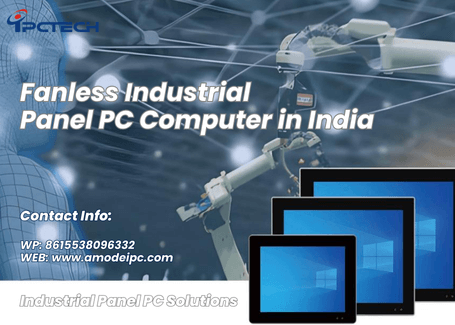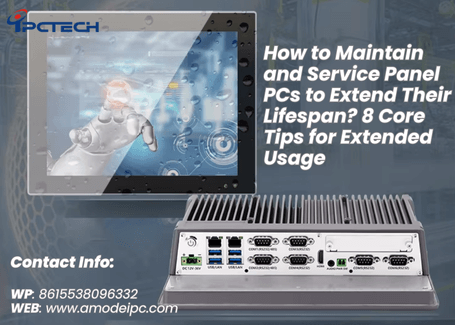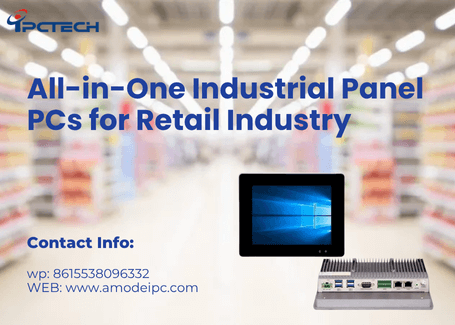Fanless Industrial Panel PCs for Wet Environments: IP67 vs. IP65 – Which One Fits Your Needs
Fanless industrial tablets, however, leverage their inherent advantage of “no ventilation holes and fully enclosed structures” to block moisture ingress at its source, making them the core choice for industrial applications in humid environments. As China's professional developer and manufacturer of industrial motherboards, industrial tablets, and fanless mini PCs, IPCTECH has dedicated over 20 years to the industrial computing sector. We not only possess mature OEM/ODM customization capabilities but also provide highly reliable products and one-stop solutions compliant with international IP protection standards for complex industrial environments like wet conditions. Our products are widely deployed across critical sectors including military, telecommunications, metallurgy, transportation, power generation, and healthcare, serving over 1,000 stable global clients. Guided by our core values of “Quality, Innovation, and Service Excellence,” we deliver robust and stable computing support for industrial automation upgrades.
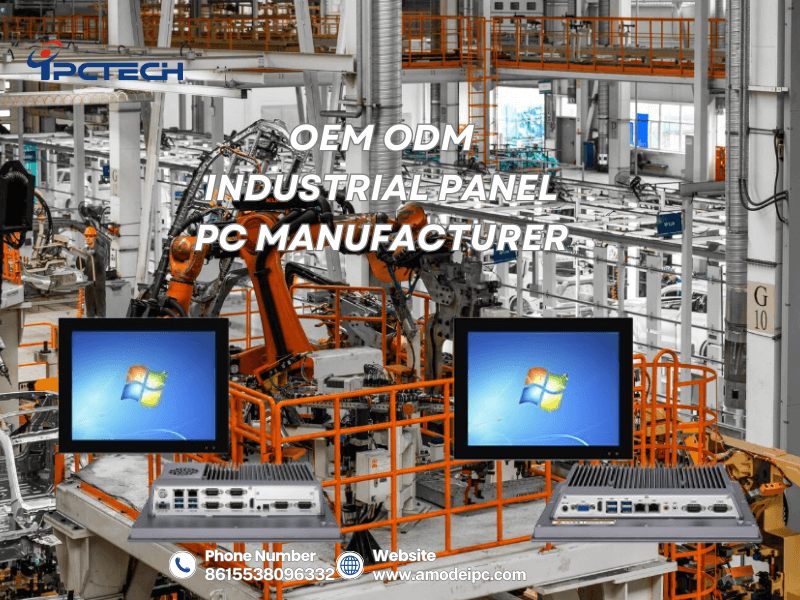
What exactly do IP65 and IP67 ratings mean?
To select the right industrial tablet for wet environments, one must first clearly understand the “coding rules” of IP protection ratings. IP ratings (Ingress Protection Rating), established by the International Electrotechnical Commission (IEC) and adhering to IEC 60529 standards, precisely define a device's protective capabilities using two digits: - The first digit indicates the “Solid Particle Protection Level” (0-6, where higher numbers signify stronger protection). - The second digit denotes the “Liquid Protection Level” (0-9K, where higher numbers indicate stronger protection).
All IPCTECH industrial tablet products carry multiple industry certifications including CE, FCC, ROHS, and CCC, ensuring the protection performance of every device is authentic and reliable.
IP65 Rating
(1) Solid Particle Protection (Level 6): Complete dustproofing, eliminating dust interference
The first digit “6” in IP65 signifies complete protection against all solid particles (including dust as small as 75μm) entering the device. In dusty environments like flour mills, construction material workshops, and machinery manufacturing, dust entering the device can adhere to critical components such as circuit boards and heat sinks. Long-term accumulation not only impedes heat dissipation but may also cause circuit short-circuits.
IPCTECH's IP65 industrial tablets feature a “fully enclosed housing + precision seam sealing” design. The housing utilizes high-strength aluminum alloy material. After anodic oxidation treatment, it not only significantly enhances corrosion resistance but also facilitates natural heat dissipation through the housing. For example, our P6000 series IP65 industrial tablet underwent testing in a building materials workshop with dust concentrations as high as 10mg/m³. After 30 days of continuous operation, internal components remained clean with no dust accumulation.
(2) Liquid Protection (Level 5): Resists low-pressure water jets and handles everyday splashes
The second digit “5” in IP65 signifies resistance to “low-pressure water jets from any direction.” Specific test criteria include: water flow ≤12.5L/min, water pressure ≤30kPa, spray distance 2.5-3m. After continuous exposure for 3 minutes, no water ingress occurs inside the device. This protection fully meets requirements for scenarios like cleaning sprays in food processing workshops, water splashes in car washes, and condensation in indoor pump rooms.
To accommodate diverse installation requirements, IPCTECH's IP65 industrial tablets offer two options: “Front-End Waterproof/Dustproof” and “Full-Unit Waterproof/Dustproof.” The front-end waterproof model suits embedded installations (e.g., equipment control cabinet panels) where only the front faces external environments. The full-unit waterproof model enables standalone installation in open spaces, providing comprehensive protection against moisture intrusion. Additionally, all interfaces feature silicone rubber sealing plugs. Even when cables are disconnected, these plugs maintain waterproof integrity, preventing moisture ingress through ports.
IP67 Rating
(1) Solid Particle Protection (Level 6): Consistent with IP65, maintaining the baseline dust resistance
The first digit of IP67 is also “6,” indicating identical dust protection capabilities to IP65. This is the “base configuration” for all IPCTECH industrial tablets. Whether deployed in dusty outdoor road monitoring scenarios or high-dust indoor mining control rooms, IP67 models ensure internal components remain unaffected by dust, maintaining long-term stable operation.
(2) Liquid Protection (Grade 7): Withstands Brief Immersion, Handles Extreme Wet Environments
The second digit “7” in IP67 represents its core distinction from IP65—the device can be submerged in 1 meter of still water for 30 minutes and still function normally upon removal without any internal water ingress. This protection enables it to withstand “high-risk” wet environments such as outdoor torrential rain puddles, temporary water level rises in sewage treatment plants, and seawater splashes on marine equipment.
To achieve this rating, IPCTECH's IP67 industrial tablets feature comprehensive sealing technology upgrades:
• Sealing Material: Utilizes anti-aging silicone rubber gaskets instead of standard rubber used in IP65 models. This provides over 3 times greater aging resistance, maintaining excellent elasticity and sealing integrity across temperatures from -40°C to 80°C.
• Structural Design: Key models (e.g., P8000 series) feature a “dual-seal structure.” Beyond primary gaskets at enclosure seams, auxiliary sealing grooves provide redundant protection. Interfaces include waterproof covers secured with waterproof nuts after cable connection, ensuring equivalent IP67 protection at connection points.
• Testing and Validation: Every batch of IP67 products undergoes a “submersion test” before shipment—the device is fully submerged in 1 meter of fresh water for 30 minutes. After removal, it is immediately powered on for testing to ensure all functions operate normally with no short circuits or malfunctions.
Core Performance Differences Between IP65 and IP67 Fanless Industrial Panel PCs
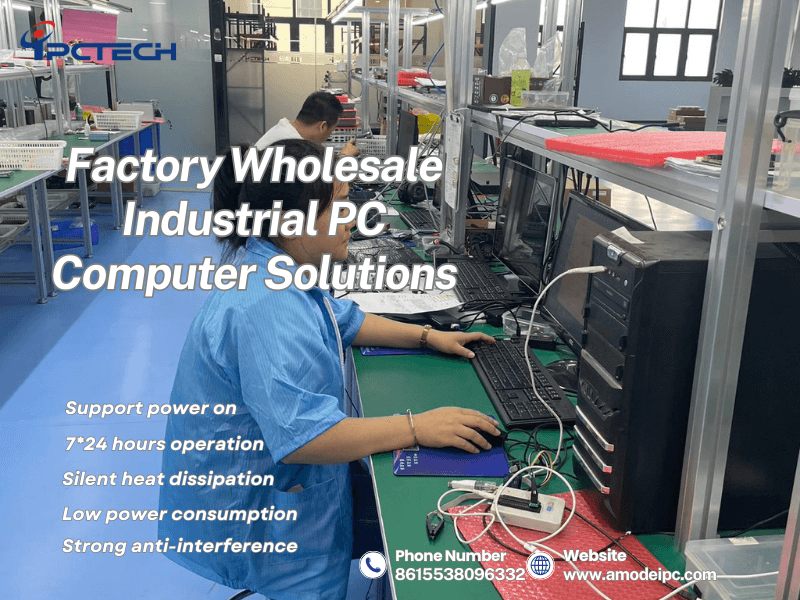
IPCTECH's fanless industrial panel PCs feature an “all-aluminum alloy heat dissipation + ventless design,” structurally minimizing moisture ingress pathways. Their extreme environment adaptability is validated through “controlled high-temperature testing” and “low-temperature startup testing.” However, IP65 and IP67 models exhibit distinct differences in waterproofing capability, thermal efficiency, and installation flexibility. Precise selection based on actual application requirements is essential:
1. Waterproofing Capability Boundaries: Splash vs. Immersion – Scenario Adaptation is Key
IP65 models are limited to “low-pressure water spray” resistance and cannot withstand immersion or high-pressure water impact. For instance, in slaughter areas of food processing plants where high-pressure water jets (≥500kPa) are used for equipment cleaning, the IP65 model's seals can be breached by the force, allowing water ingress. Similarly, in outdoor settings where torrential rains cause equipment to be submerged in standing water, the IP65 model cannot withstand such conditions.
The IP67 model, however, easily handles these “high-risk” scenarios: We installed an IP67 industrial tablet at a coastal city's sewage pumping station. This area frequently experiences typhoon-force rainstorms in summer, where the device was repeatedly submerged in 10-20cm deep water. After each immersion, powering it back on revealed all functions operating normally without any malfunctions. This thoroughly validated the reliability of IP67 models in extreme wet environments.
2. Heat Dissipation Efficiency vs. Weight: Balancing Protection and Performance
Fanless designs rely on enclosure heat dissipation, yet sealed structures inherently hinder thermal performance. To balance protection and cooling, IPCTECH employs distinct thermal solutions for IP65 and IP67 models:
• IP65 Models: Utilize a striped mesh aluminum alloy enclosure, increasing surface area by 40% compared to standard flat designs and boosting thermal efficiency by 25%. For example, the 15.6-inch P6000-156 model maintains a surface temperature of just 45°C under full load (100% CPU utilization), significantly lower than the 52°C recorded for IP67 models. Additionally, the IP65 model weighs 10%–15% less than its IP67 counterpart of the same size (approximately 2.8kg vs. 3.2kg for the 15.6-inch models), making it more suitable for installation on supports with limited load capacity (e.g., workshop workbench brackets, suspended mounting frames).
•IP67 Model: Due to its more complex sealing structure and greater thermal management challenges, this model employs a thicker aluminum alloy housing. Additionally, certain high-power variants (e.g., those equipped with Intel Core i7 processors) incorporate a heat spreader plate. This plate rapidly conducts heat generated by the CPU to the housing, ensuring core temperatures remain below 70°C even during full-load operation. Additionally, the IP67 model's chassis is 5–10mm thicker than the IP65 model (approximately 25mm vs. 18mm for the 15.6-inch variant). While this trade-off reduces slimness, it delivers significantly enhanced protection.
3. Touch Control Functionality: Seamless Operation with Wet Hands, Adaptable to Diverse Scenarios
Whether IP65 or IP67 models, IPCTECH offers both resistive and capacitive touch technologies to ensure precise operation in wet environments:
• Resistive Touch: Utilizes pressure-sensing technology, supporting operation with gloves (cotton or rubber gloves ≤5mm thick). Ideal for oil-prone environments like machining shops and meat processing facilities. Accurate touch recognition persists even with minor oil residue or water droplets on the screen surface when sufficient pressure is applied.
• Capacitive Touch: Features a hydrophobic coating with a surface contact angle ≥110°, causing water droplets to roll off automatically and reducing moisture adhesion. It also supports “underwater single-point touch,” enabling normal recognition of finger operations even when the touchscreen surface is covered by a 1–2mm water film. This makes it perfectly suited for wet-hand operation scenarios like seafood processing, car washes, and outdoor use in rainy conditions.
4. Interfaces and Expandability: Meeting Diverse Peripheral Connection Needs
In industrial settings, devices often require connections to peripherals like PLCs, sensors, printers, and barcode scanners, making interface quantity and types critical. IPCTECH has optimized interface configurations for IP65 and IP67 models:
• IP65 Models: Feature comprehensive standard interfaces including 2 Gigabit Ethernet ports, 4 USB 3.0 ports, 2 RS-232 serial ports, and 1 HDMI port. Select models support expandable PCIe slots for adding modules like wireless network cards or data acquisition cards as needed.
• IP67 Models: Designed for outdoor or harsh environments with heightened interface protection requirements, featuring waterproof interfaces such as M12 industrial Ethernet ports (IP67-rated) and waterproof USB Type-C ports. These prevent moisture ingress even during cable connections in humid conditions. Additionally, it supports “removable customizable interfaces,” allowing customers to add or remove ports based on actual requirements. For example, four RS-485 serial ports can be customized for wastewater treatment scenarios to connect water quality sensors.
IP65 vs IP67
Core Advantages of IP65 Model
• Cost-effective: 20%–30% lower procurement costs compared to IP67 models, ideal for bulk deployments (e.g., multi-station monitoring on production lines, chain store terminals);
• Flexible installation: Supports flush-mounted wall mounting, open-frame mounting, and VESA bracket mounting (75×75mm/100×100mm), accommodating confined spaces (e.g., inside equipment control cabinets, control panel surfaces);
• Efficient Heat Dissipation: Striped mesh housing design enhances thermal efficiency by 25% over standard sealed devices, ensuring stable operation within -20°C to 60°C temperature ranges to meet most indoor industrial requirements.
Core Advantages of the IP67 Model
• High Reliability: Passed 1000+ hours of high/low temperature cycling tests (-40°C to 70°C), 100 hours of vibration testing (10–500Hz frequency), and 30-minute immersion tests, achieving an MTBF exceeding 80,000 hours—significantly surpassing the industry average (50,000 hours)—drastically reducing equipment failure risks;
• Strong Environmental Adaptability: Beyond IP67 waterproof and dustproof ratings, it maintains stable performance in harsh environments such as salt spray, acid/alk
(MTBF) exceeding 80,000 hours—significantly surpassing the industry average (50,000 hours)—drastically reducing equipment failure risks;
• Strong Environmental Adaptability: Beyond IP67 waterproofing and dustproofing, it features salt spray resistance and electromagnetic interference (EMI) immunity, ensuring stable operation in harsh environments like coastal areas, mines, and power plants;
•Highly customizable: Flexible configuration options for screen size (8–24 inches), processor models (Intel Celeron/Core i3/i5/i7), and storage capacity (SSD 64GB–2TB) to meet diverse computing demands across various scenarios.
How to Choose Between IP65 and IP67?
Comprehensively Assess Environmental Risks and Define Core Requirements
Before making a selection, first identify the core risks of the application scenario:
• First Question: What form of moisture exposure exists? Is it “occasional splashing” (e.g., workshop workbenches), “persistent high humidity” (e.g., fermentation facilities), or “potential submersion” (e.g., outdoor flood zones, sewage pumping stations)? If submersion risk exists, directly select IP67; if only splashes or high humidity, IP65 suffices.
• Second Question: Are there additional risks? Does the environment contain dust (e.g., flour mills), corrosive substances (e.g., seawater, cleaning agents), or extreme temperatures (e.g., outdoor exposure, cold storage)? If corrosive substances are present, select IPCTECH's 316 stainless steel housing models (only available with IP67). For extreme temperature requirements, verify the device's operating range (IPCTECH IP65 supports -20°C to 60°C; IP67 supports -40°C to 70°C).
• Third Question: How will the device be installed? Will it be embedded (e.g., in a control cabinet panel), wall-mounted (e.g., on a workshop wall), or freestanding (e.g., an outdoor kiosk)? For embedded installations, choose IP65 front-end waterproof models. For freestanding or outdoor installations, select IP67 fully waterproof models.
Customized Solutions for Unique Requirements
Industrial scenarios present diverse requirements where standardized products may not fully address specific client needs. IPCTECH possesses mature OEM/ODM customization capabilities, enabling flexible adjustments to product configurations based on client specifications, such as:
• Interface customization: Adding RS-485 serial ports for automotive production lines to connect barcode scanners; incorporating 4G/5G modules for outdoor kiosks to ensure network stability;
• Enclosure customization: 304 stainless steel enclosures for food industry applications, 316 stainless steel enclosures for marine environments, and antimicrobial-coated enclosures for medical settings;
• Software customization: Pre-installing customer-specific industrial control software or remote monitoring software for out-of-the-box operation without additional deployment;
• Size Customization: Offers screens ranging from 8 to 24 inches to accommodate compact installations (e.g., equipment control cabinets) or large-format displays (e.g., outdoor advertising screens).
IPCTECH's customization process is efficient and streamlined: Samples are produced within 3-5 business days after client requirements are submitted. Following sample confirmation, bulk production is completed within 15-30 days, ensuring rapid project implementation for clients.
Common Misconceptions Clarified: IPCTECH Helps You Avoid Selection Risks
Misconception 1: IP67 is “better” than IP65, and all wet environments should choose IP67
Truth: IP ratings indicate “scenario suitability,” not “superiority.” If the environment poses no risk of immersion (e.g., indoor workshops with only splashing water), choosing IP67 incurs 30%-50% higher procurement costs and results in bulkier equipment (IP67 is 5-10mm thicker than IP65), complicating installation.
IPCTECH Solutions: Select based on environmental risk assessment reports. Avoid blindly pursuing higher ratings—choose only what is strictly necessary.
Misconception 2: Once IP-rated, equipment remains waterproof for life
Truth: IP protection degrades over time — seals (rubber/silicone) lose elasticity due to aging, heat, or chemical corrosion, while connectors may fail from frequent cable insertion/removal. Without maintenance, even IP67 equipment may lose waterproofing within 2–3 years.
IPCTECH Solutions:
• Age-resistant materials: IP67 models use imported silicone rubber gaskets with 3x longer aging resistance than standard rubber;
• Scheduled maintenance: On-site inspections every 6 months to check seals and replace aged components, ensuring sustained IP rating protection.
Misconception 3: Fanless designs suffer from “poor heat dissipation,” causing device lag
Truth: While traditional fanless devices indeed lag due to inadequate cooling, IPCTECH has completely resolved this issue through “structural optimization + material upgrades”:
IPCTECH Solutions:
• Structural Optimization: Utilizes “striped mesh enclosures” (IP65) or “thickened aluminum alloy enclosures + heat spreaders” (IP67) to increase heat dissipation surface area and enhance cooling efficiency;
• Material upgrades: Housings made from 6061 aluminum alloy, featuring thermal conductivity three times higher than standard steel, rapidly dissipating internal heat externally;
• Rigorous testing: Every device undergoes “full-load thermal testing” before shipment—operating at full capacity for 24 hours in a 60°C environment, maintaining core temperatures below 70°C with no stuttering or throttling.
Taking the IPCTECH P8000 as an example, equipped with an Intel Core i5-1035G1 processor, its surface temperature remains at just 52°C during full-load operation (100% CPU utilization), ensuring smooth performance without any lag.
Conclusion
In industrial wet environments, IP65 offers cost-effective protection for low-to-moderate humidity, while IP67 delivers reliable performance in high-humidity or water-exposed scenarios. As a leading Chinese industrial computer R&D manufacturer, IPCTECH crafts customized industrial computing solutions to meet diverse industrial automation needs.
For over 20 years, IPCTECH has resolved wet-environment equipment challenges for 1000+ clients. From food processing workshop control panels to outdoor smart kiosks, from wastewater treatment plant monitoring terminals to marine control panels, our products consistently earn customer recognition for “high reliability, long lifespan, and easy maintenance.”
If you're selecting industrial tablets pc for humid environments or have customization needs, feel free to contact IPCTECH anytime:
